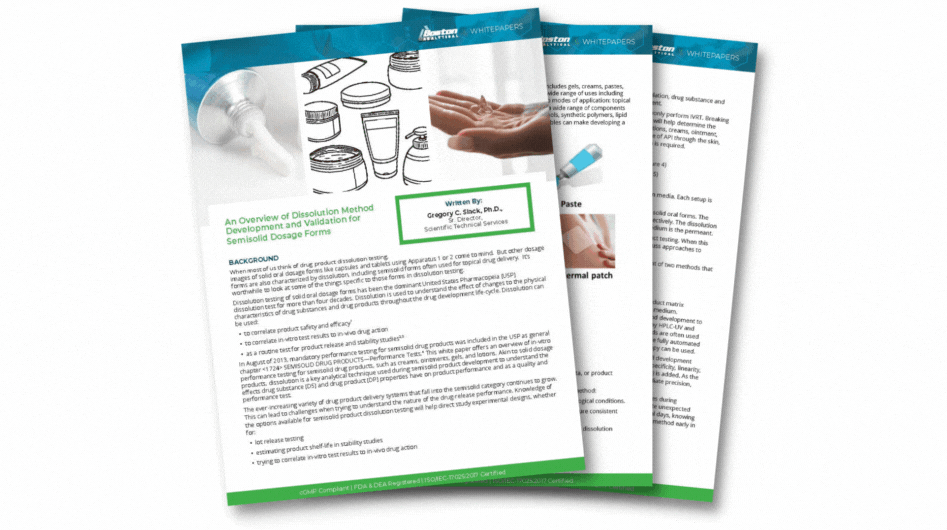BACKGROUND
When most of us think of drug product dissolution testing, images of solid oral dosage forms like capsules and tablets using Apparatus 1 or 2 come to mind. But other dosage forms are also characterized by dissolution, including semisolid forms often used for topical drug delivery. It’s worthwhile to look at some of the things specific to those forms in dissolution testing. Dissolution testing of solid oral dosage forms has been the dominant United States Pharmacopeia (USP) dissolution test for more than four decades. Dissolution is used to understand the effect of changes to the physicalcharacteristics of drug substances and drug products throughout the drug development life-cycle. Dissolution can be used:
• to correlate product safety and efficacy
• to correlate in-vitro test results to in-vivo drug action
• as a routine test for product release and stability studies
In August of 2013, mandatory performance testing for semisolid drug products was included in the USP as general chapter <1724> SEMISOLID DRUG PRODUCTS—Performance Tests.4 This white paper offers an overview of in-vitro performance testing for semisolid drug products, such as creams, ointments, gels, and lotions. Akin to solid dosage products, dissolution is a key analytical technique used during semisolid product development to understand the effects drug substance (DS) and drug product (DP) properties have on product performance and as a quality and performance test.
The ever-increasing variety of drug product delivery systems that fall into the semisolid category continues to grow. This can lead to challenges when trying to understand the nature of the drug-release performance. Knowledge of the options available for semisolid product dissolution testing will help direct study experimental designs, whether for:
• lot release testing
• estimating product shelf-life in stability studies
• trying to correlate in-vitro test results to in-vivo drug action






